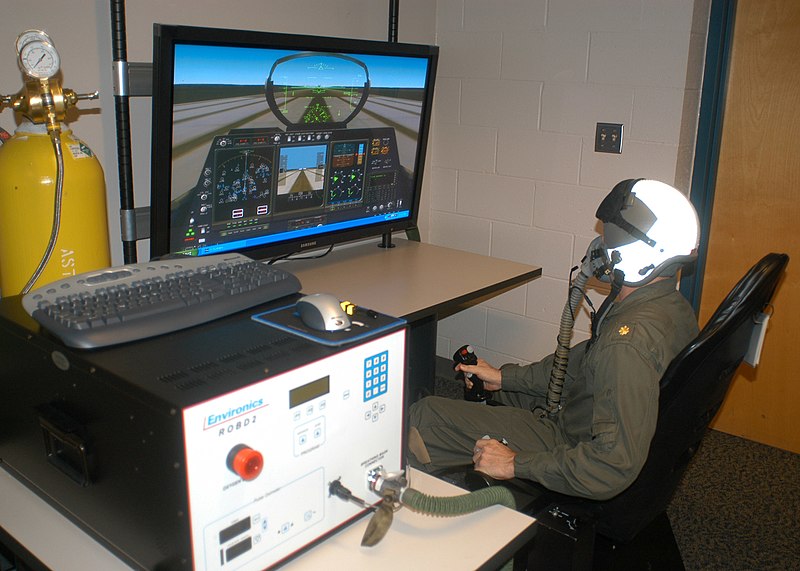Reduce oxygen or hypoxia training is conducted in a number of different ways. Traditionally, altitude chambers were used. Pilots were placed in the chambers and asked to do minor tasks, such as identify playing cards or play pat-a-cake with another subject. Oxygen levels were decreased, and pilots were directed to switch on their supplemental oxygen reserves when needed. Some drawbacks to these chambers are:
- they are expensive to build and maintain
- they do not mimic the activities of the pilots (just the condition itself)
- they use standard air composition at reduced barometric pressures versus reduced oxygen
- there are added medical risks to the subjects due to the pressure changes.
Another training method, developed by the US Navy, is a Reduced Oxygen Breathing Device (ROBD). This system involves the use of gas mixers, which reduce the relative percent of oxygen in the air breathed. While there are still medical risks associate with the training due to the hypoxic conditions, these newer systems have several advantages. These include:
Oxygen Breathing Device (ROBD). This system involves the use of gas mixers, which reduce the relative percent of oxygen in the air breathed. While there are still medical risks associate with the training due to the hypoxic conditions, these newer systems have several advantages. These include:
- they are less expensive
- they are portable and can be used in the field. Read the recent story by Tech. Sgt. Randy Redman for DVIDS about the use of the ROBD by the US Navy to train Iraqi Air Force pilots.
- they are used in combination with flight simulators to mimic the activities of the pilots
- they are less predictable since the oxygen levels can be changed without pilot knowledge, making the pilot rely on their own symptoms to judge their level of hypoxia
- there are fewer medical risks
To learn more about Hypoxia training using the ROBD based system, watch this video or click here.

